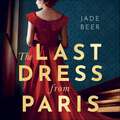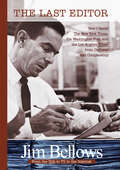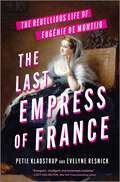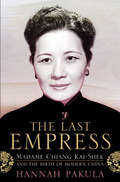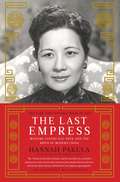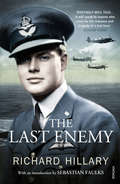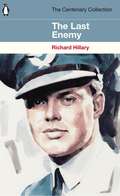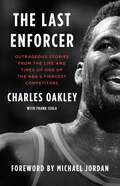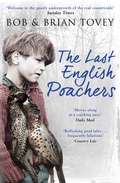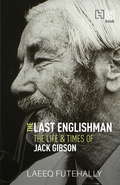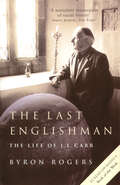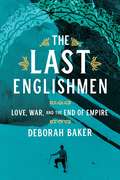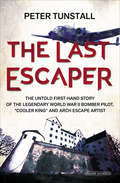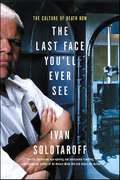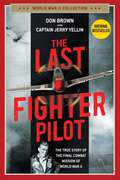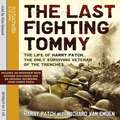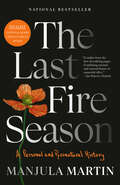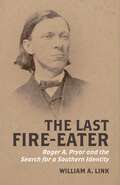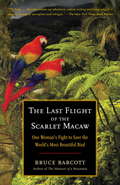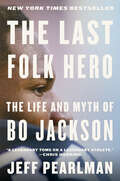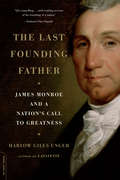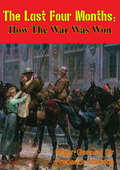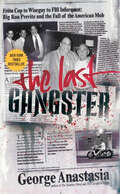- Table View
- List View
The Last Dress from Paris: The glamorous, romantic dual-timeline read of summer 2022
by Jade BeerA sweeping dual-narrative love story sweeping from 1950s Paris to the V&A Museum in London, told through eight couture dresses that reunite three generations of women.Each Dior dress tells a story...London, 2017. When her beloved grandmother, Sylvie, sends her to Paris to retrieve a dress she wore decades before, Lucille sees the perfect opportunity to briefly escape the pressures of her own life. But not everything is as it seems, and the long-buried secrets she discovers, hidden in a collection of priceless Dior gowns, could change everything.Paris, 1952. Postwar France is full of glamour and privilege, and Alice Ainsley is in the middle of it all. As the wife to the British ambassador to France, her life is a whirlwind of jewels, banquets and couture dresses, but beneath the glittering facade, Alice is suffocating in a loveless marriage. So when a new face appears in her drawing room, Alice finds herself yearning to follow her heart . . . no matter the consequences.Deliciously evocative and achingly romantic, sweeping from 50s Paris to the V&A museum in London, The Last Dress from Paris is the perfect read for fans of Natasha Lester, Fiona Valpy and Gill Paul'A delightful fashion treasure hunt involving some of my favorite Dior gowns made this book a winner for me! The present day and 1950s narratives weave seamlessly together, the dresses dance from the pages, and Paris is resplendently depicted'-Natasha Lester, New York Times bestselling author of The Paris Secret(P) 2022 Penguin Audio
The Last Editor: How I Saved the New York Times, the Washington Post, and the Los Angeles Times from Dullness and Complacency
by Jim BellowsThe innovative newspaper editor chronicles his storied career in this memoir, featuring sidebars from the like of Tom Wolfe, Katherine Graham, and more.The Last Editor is the memoir of Jim Bellows, the editor whose David-and-Goliath battles changed the face of the newspaper business. Bellows struggled to save major competitors of America’s three most powerful newspapers: the New York Times, the Washington Post, and the Los Angeles Times. In doing so, he developed major talent from rough cuts and brought a new generation of writers to the mainstream press.The Last Editor is a unique memoir of a man who loved a fight—highlighted with commentary from his colleagues in letters and sidebars from the biggest names in media. Sidebars from Tom Wolfe, Ben Bradlee, Art Buchwald, Katherine Graham, Mary McGrory, William Safire, just to name a few, and 16 pages of black-and-white photos, provide behind-the-scenes insights to the triumphs and controversies of the man who shaped the industry.“This is a lively, engaging recollection of the glory days of newspapers with amusing stories of the fabled men and women of journalism at a time when many American cities supported at least two newspapers.” —Booklist
The Last Empress of France: The Rebellious Life of Eugénie de Montijo
by Petie Kladstrup Evelyne ResnickThe dramatic untold story of Eugénie de Montijo, the woman who created haute couture, fought for women&’s rights, opened France&’s schools to girls and ruled the country as its last empress, yet today remains almost unknown. Although a nineteenth-century woman, her almost twenty-first-century outlook was key to the creation of modern France. Viewed frequently as a mere &“ornament of the throne&” of her husband, Emperor Napoléon III, this Spanish-born aristocrat proved to be almost as fiery as her red hair, fighting against institutional limitations, establishing innovations in childcare and women&’s health, scientific research and education, battling anti-Semitism and &“sex prejudice,&” all the while displaying a political acumen so sharp that her husband gave her sole control of the government during his absences and consulted her daily when he was home. But the triumphs and glamour of her life were coupled with heartbreak and tragedy. This first definitive American biography of Eugénie restores her far-reaching legacy to history.
The Last Empress: A Novel
by Anchee Min&“Admirers of Empress Orchid will be interested in this sequel. Others may find the introduction to relatively modern Chinese history a revelation&” (Rocky Mountain News). During the tumultuous end of the nineteenth century in China, the only constant was the power wielded by one person: the resilient, ever-resourceful Tzu Hsi, Lady Yehonala—or Empress Orchid—as readers came to know her in Anchee Min&’s critically acclaimed novel covering the first part of her life. In The Last Empress, Orchid moves from the intimacy of the concubine quarters into the spotlight of the world stage. Devastating personal losses take their toll, leaving her yearning to step aside, but only she—allied with the progressives, but loyal to the conservative Manchu clan of her dynasty—can hold the nation&’s rival factions together. Anchee Min offers a powerful revisionist portrait based on extensive research of one of the most important figures in Chinese history. Viciously maligned by the western press of the time as the &“Dragon Lady,&” a manipulative, blood-thirsty woman who held onto power at all costs, the woman Min gives us is a compelling, very human leader who assumed power reluctantly, and who sacrificed all she had to protect those she loved and an empire that was doomed to die. &“The vision of an empress who very nearly had it all: vulnerability and strength, motherhood and power, earthiness and dignity, compassion and ambition.&” —The Washington Post &“Invokes the intrigue and opulence of nineteenth-century China while telling the story of its improbably dominant ruler.&” —Los Angeles Times
The Last Empress: Madame Chiang Kai-Shek and the Birth of Modern China
by Hannah PakulaEntertaining and masterly biography of Madame Chiang Kai-shek - the woman who built modern China.THE LAST EMPRESS revolves around a fascinating, manipulative woman and her family who were largely responsible for dragging China into the modern world. Soong May-ling, or Madame Chiang as she was known, is uniquely positioned at the heart of this story. As her husband came to represent the hopes of the West in the East, she acted as his adviser, English translator, secretary, and most loyal champion, finding herself on the world stage with Franklin D Roosevelt and Winston Churchill. A savvy politician, she remained a popular if controversial figure both at home and abroad.Hannah Pakula brilliantly narrates the life of this extraordinary woman - how she charmed the United States out of billions of dollars while remaining dedicated to her China, and how she managed to influence if not change the history of the twentieth century.
The Last Empress: Madame Chiang Kai-shek and the Birth of Modern China
by Hannah PakulaWith the beautiful, powerful, and sexy Madame Chiang Kai-shek at the center of one of the great dramas of the twentieth century, this is the story of the founding of modern China, starting with a revolution that swept away more than 2,000 years of monarchy, followed by World War II, and ending in the eventual loss to the Communists and exile in Taiwan. An epic historical tapestry, this wonderfully wrought narrative brings to life what Americans should know about China -- the superpower we are inextricably linked with -- the way its people think and their code of behavior, both vastly different from our own. The story revolves around this fascinating woman and her family: her father, a peasant who raised himself into Shanghai society and sent his daughters to college in America in a day when Chinese women were kept purposefully uneducated; her mother, an unlikely Methodist from the Mandarin class; her husband, a military leader and dogmatic warlord; her sisters, one married to Sun Yat-sen, the George Washington of China, the other to a seventy-fifth lineal descendant of Confucius; and her older brother, a financial genius. This was the Soong family, which, along with their partners in marriage, was largely responsible for dragging China into the twentieth century. Brilliantly narrated, this fierce and bloody drama also includes U. S. Army General Joseph Stilwell; Claire Chennault, head of the Flying Tigers; Communist leaders Mao Tse-tung and Chou En-lai; murderous warlords; journalists Henry Luce, Theodore White, and Edgar Snow; and the unfortunate State Department officials who would be purged for predicting (correctly) the Communist victory in the Chinese Civil War. As the representative of an Eastern ally in the West, Madame Chiang was befriended -- before being rejected -- by the Roosevelts, stayed in the White House for long periods during World War II, and charmed the U. S. Congress into giving China billions of dollars. Although she was dubbed the Dragon Lady in some quarters, she was an icon to her people and is certainly one of the most remarkable women of the twentieth century.
The Last Enemy: The Centenary Collection (G - Reference,information And Interdisciplinary Subjects Ser.)
by Richard HillaryThe Last Enemy is the story of Richard Hillary, one of Sebastian Faulks' three 'fatal englishmen'. In this extraordinary account, the author details his experiences as a fighter pilot in the Second World War, in which he was shot down, leading to months in hospital as part of Archibald McIndoe's 'Guinea Pig Club', undergoing pioneering plastic surgery to rebuild his face and hands. The Last Enemy was first published in 1942, just seven months before Hilary's untimely death in a second crash and has gone on to be hailed as one of the classic texts of World War Two.
The Last Enemy: The Centenary Collection (The Centenary Collection)
by Richard HillaryIn 1918, the RAF was established as the world's first independent air force. To mark the 100th anniversary of its creation, Penguin are publishing the Centenary Collection, a series of six classic books highlighting the skill, heroism and esprit de corps that have characterised the Royal Air Force throughout its first century.The Last Enemy is Richard Hillary's extraordinary account of his experience as a Spitfire pilot in the Second World War. Hillary was shot down during the Battle of Britain, leading to months in hospital as part of Archibald McIndoe's 'Guinea Pig Club', undergoing pioneering plastic surgery to rebuild his face and hands. The Last Enemy was first published in 1942, just seven months before Hilary's untimely death in a second crash and has gone on to be hailed as one of the classic texts of World War II.
The Last Enforcer: Outrageous Stories From the Life and Times of One of the NBA's Fiercest Competitors
by Charles OakleyA memoir from Charles Oakley—one of the toughest and most loyal players in NBA history—featuring unfiltered stories about the journey that basketball has taken him on and his relationships with Michael Jordan, LeBron James, Charles Barkley, Patrick Ewing, Phil Jackson, Pat Riley, James Dolan, Donald Trump, George Floyd, and so many others.If you ask a New York Knicks fan about Charles Oakley, you better prepare to hear the love and a favorite story or two. But his individual stats weren&’t remarkable, and while he helped power the Knicks to ten consecutive playoffs, he never won a championship. So why does he hold such a special place in the minds, hearts, and memories of NBA players and fans? Because over the course of nineteen years in the league, Oakley was at the center of more unbelievable encounters than Forrest Gump, and nearly as many fights as Mike Tyson. He was the friend you wish you had, and the enemy you wish you&’d never made. If any opposing player was crazy enough to start a fight with him, or God forbid one of his teammates, Oakley would end it. &“I can&’t remember every rebound I grabbed but I do have a story—the true story—of just about every punch and slap on my resume,&” he says. In The Last Enforcer, Oakley shares one incredible story after the next—all in his signature, unfiltered style—about his life in the paint and beyond, fighting for rebounds and respect. You&’ll look back on the era of the 1990s NBA, when tough guys with rugged attitudes, unflinching loyalty, and hard-nosed work ethics were just as important as three-point sharpshooters. You&’ll feel like you were on the court, in the room, can&’t believe what you just saw, and need to tell everyone you know about it.
The Last English Poachers
by Bob ToveyJust two hours' drive west of London, a secret way of life that has been operating for centuries is clinging to a fragile existence. This is the world of the last English poachers - men who have lived off the land, taking game and wildlife from the big country estates, risking the wrath of gamekeepers in order to feed their families and make a modest livelihood. Poachers have lived cheek by jowl with landowners and the gentry throughout the history of the British class system. Their customs, hunting skills and knowledge of animals is comparable to that of indigenous communities in pre-industrial societies, yet the poacher has been vilified, ridiculed and, in olden times, even put to death for his activities. Hence, a war of attrition has been waged across the generations, played out in the woodlands of Britain, often undercover of night in clandestine operations comparable to military manoeuvres. Bob and BrianTovey are poachers of the old stripe: a father and son of 75 and 50 years old respectively, who are continuing their ancestors' traditions, reluctant to surrender the old ways of sourcing food from nature. Writer John McDonald has obtained unique access to the men's lives and histories, and tells their fascinating story in their own words. The book is filled with anecdotes both moving and hilarious, as their sense of self-preservation, mistrust of outsiders and suspicions of modern technology express themselves in daily life. It is set against the backdrop of country sports as they used to be - and will colourfully explain the shoots, the once-legal coursing meets, the centuries' old techniques of lamping, ferreting and netting and, of course, how the poachers outwit the keepers and police and escape with their quarry. It is a genuine, colourful and offbeat chronicle that documents rural life from a whole new perspective and a sense of humour.
The Last Englishman: The Life And Times Of Jack Gibson
by Laeeq Futehally`To educate means...to lead out, not to drive in. The first problem for a teacher is...to awake interest in those he is teaching and to make them keen to find out and understand for themselves, rather than rely on textbooks? The ability to do this, indeed, is the test of a really educated man, especially in [India], where objectivity is little valued, and a large assemblage of facts is much admired.? Widely acknowledged as the pioneer of the public school system in India, Jack Gibson?s name is synonymous with opening the doors of `privileged education? for one and all. As headmaster of Mayo College, Ajmer, he singlehandedly transformed the school into the `Eton of India?, laying the foundation for the formidable reputation it enjoys as well as for the methods in which education is imparted in public schools today. Having moved to India from England in 1936 to join the newly founded Doon School as a housemaster, Gibson adopted the country and its people as his own. His keen mind and larger-than-life nature made him a popular leader, one who was closely involved in his students? lives, fulfilling the roles of teacher, mentor, parent and disciplinarian all at once. Beloved by his students for his unconventional teaching methods (frequently involving picnics and treks to the nearby hills), his innate sense of fairness and his accessibility, he remained at Doon until 1953 ? during which time he also served as the first principal of the Joint Services Wing, now the prestigious National Defence Academy ? before joining Mayo College. For his outstanding contribution to education, he was awarded the Padma Shri in 1965. Educator, visionary, coach, mountaineer, friend and, above all, an inspiration, Gibson left an indelible mark on the institutions and the people he encountered in his life. Drawing on the many memories uncovered in his writings, The Last Englishman recounts the story of an extraordinary man through stories and anecdotes from those closest to him ? his boys.
The Last Englishman: The Life of J.L. Carr
by Byron RogersA biography of the English educator, dictionary writer, and celebrated author of A Month in the Country.J.L. Carr was the most English of Englishmen: headmaster of a Northamptonshire school, cricket enthusiast and campaigner for the conservation of country churches. But he was also the author of half a dozen utterly unique novels, including his masterpiece, A Month in the Country, and a publisher of some of the most eccentric—and smallest—books ever printed.Byron Roger’s acclaimed biography reveals an elusive, quixotic and civic-minded individual with an unswerving sympathy for the underdog, who led his schoolchildren through the streets to hymn the beauty of the cherry trees and paved his garden path with the printing plates for his hand-drawn maps, and whose fiction is quite remarkably autobiographical. Much more than the life of a thoroughly decent man, The Last Englishman is a comic and touching anatomy of the best kind of Englishness.Praise for The Last Englishman“A miniature masterpiece of social history.” —Simon Jenkins, The Times (UK)“A fine biography. . . . Rogers has done a wonderful job.” —Daily Telegraph (UK)“Conveying the significance of the author of Carr’s Dictionary of Extraordinary Cricketers to anyone unfamiliar with his books, or what may now fairly be called his myth, was always going to be difficult. Somehow, Roger’s has managed it.” —D. J. Taylor, Sunday Times (UK)“A great success, and more life-affirming than F. R. Leavis’s entire output.” —Independent on Sunday (UK)
The Last Englishmen: Love, War, and the End of Empire
by Deborah BakerA sumptuous biographical saga, both intimate and epic, about the waning of the British Empire in IndiaJohn Auden was a pioneering geologist of the Himalaya. Michael Spender was the first to draw a detailed map of the North Face of Mount Everest. While their younger brothers—W. H. Auden and Stephen Spender—achieved literary fame, they vied to be included on an expedition that would deliver Everest’s summit to an Englishman, a quest that had become a metaphor for Britain’s struggle to maintain power over India. To this rivalry was added another: in the summer of 1938 both men fell in love with a painter named Nancy Sharp. Her choice would determine where each man’s wartime loyalties would lie.Set in Calcutta, London, the glacier-locked wilds of the Karakoram, and on Everest itself, The Last Englishmen is also the story of a generation. The cast of this exhilarating drama includes Indian and English writers and artists, explorers and Communist spies, Die Hards and Indian nationalists, political rogues and police informers. Key among them is a highborn Bengali poet named Sudhin Datta, a melancholy soul torn, like many of his generation, between hatred of the British Empire and a deep love of European literature, whose life would be upended by the arrival of war on his Calcutta doorstep.Dense with romance and intrigue, and of startling relevance for the great power games of our own day, Deborah Baker’s The Last Englishmen is an engrossing story that traces the end of empire and the stirring of a new world order.
The Last Escaper: The Untold First-Hand Story of the Legendary World War II Bomber Pilot, "Cooler King" and Arch Escape Artist
by Peter Tunstall&“A remarkable memoir of a British lad&’s salad days flying bombers against the Nazis and then repeatedly escaping their prison camps&” (Kirkus Reviews). The product of a lifetime&’s reflection, The Last Escaper is Peter Tunstall&’s unforgettable memoir of his days in the British Royal Air Force and as one of the most celebrated British POWs of World War II. Tunstall was an infamous tormentor of his German captors. Dubbed the &“cooler king&” on account of his long spells in solitary, he once dropped a water &“bomb&” directly in the lap of a high-ranking German officer. He also devised an ingenious method for smuggling coded messages back to London. But above all he was a highly skilled pilot, loyal friend, and trusted colleague. Without false pride or bitterness, Tunstall recounts the hijinks of training to be a pilot, terrifying bombing raids, and elaborate escape attempts at once hilarious and deadly serious—all part of a poignant and human war story superbly told by a natural raconteur. The Last Escaper is a captivating final testament by the &“last man standing&” from the Greatest Generation. &“Right up there with Stalag 17 and The Great Escape.&” —New York Post &“The historical account of behind-the-scenes drama makes this a valuable addition to the period literature.&” —Publishers Weekly &“The stark reality of war is ever present in his detailed accounting of life as a prisoner of war. We are taken through the highs and lows of not only each failed attempt but the psychological effects of imprisonment on himself, others in the camps and ultimately how it changed each person involved.&” —Pittsburgh Post-Gazette
The Last Face You'll Ever See: The Culture of Death Row
by Ivan SolotaroffIn fascinating detail, Ivan Solotaroff introduces us to the men who carry out executions. Although the emphasis is on the personal lives of these men and of those they have to put to death, The Last Face You'll Ever See also addresses some of the deeper issues of the death penalty and connects the veiled, elusive figure of the executioner to the vast majority of Americans who, since 1977, have claimed to support executions. Why do we do it? Or, more exactly, why do we want to?The Last Face You'll Ever See is not about the polarizing issues of the death penalty -- it is a firsthand report about the culture of executions: the executioners, the death-row inmates, and everyone involved in the act. An engrossing, unsettling, and provocative book, this work will forever affect anyone who reads it.
The Last Fighter Pilot: The True Story of the Final Combat Mission of World War II
by Don Brown Capt. Jerry Yellin*On the Publisher's Weekly bestseller list!*The New York Post calls The Last Fighter Pilot a "must-read" book. <P><P>From April to August of 1945, Captain Jerry Yellin and a small group of fellow fighter pilots flew dangerous bombing and strafe missions out of Iwo Jima over Japan. Even days after America dropped the atomic bombs on Hiroshima on August 6 and Nagasaki on August 9, the pilots continued to fly. Though Japan had suffered unimaginable devastation, the emperor still refused to surrender. <P><P> Bestselling author Don Brown (Treason) sits down with Yelllin, now ninety-three years old, to tell the incredible true story of the final combat mission of World War II. Nine days after Hiroshima, on the morning of August 14th, Yellin and his wingman 1st Lieutenant Phillip Schlamberg took off from Iwo Jima to bomb Tokyo. <P><P>By the time Yellin returned to Iwo Jima, the war was officially over—but his young friend Schlamberg would never get to hear the news. The Last Fighter Pilot is a harrowing first-person account of war from one of America's last living World War II veterans.
The Last Fighting Tommy: The Life of Harry Patch, the only surviving veteran of the trenches
by Harry Patch Richard Van EmdenWhen Harry Patch wrote his memoir in 2007, he was the last British soldier alive to have fought in the trenches of the First World War. He was 109 years old and one of very few people who could directly recall the horror of that conflict. Born in 1898, Harry spent a rural childhood in Somerset before leaving school in 1913 to become a plumber. Three years later he was fighting in the mud and trenches during the Battle of Passchendaele. He saw a great many of his comrades die, and in one dreadful moment the shell that wounded him killed his three closest friends. He vividly describes the terror and intensity of daily life in the trenches. The Second World War saw Harry in action on the home front as a fire-fighter during the bombing of Bath. Late in life Harry achieved fame, meeting the Queen and taking part in the BBC documentary THE LAST TOMMY, finally shaking hands with a German veteran of the artillery, and speaking out frankly to Prime Minister Tony Blair about the soldiers shot for cowardice in the First World War. Sadly, Harry passed away in July 2009, aged 111 years old. His funeral in Wells cathedral was attended by over a thousand people, while many more lined the streets to pay their last respects to an ordinary man who lived an extraordinary life.
The Last Fine Time
by Verlyn KlinkenborgBy turns, an elegy, a celebration, and a social history, The Last Fine Time is a tour de force of lyrical style. Verlyn Klinkenborg chronicles the life of a family-owned restaurant in Buffalo, New York, from its days as a prewar Polish tavern to its reincarnation as George & Eddie's, a swank nightspot serving highballs and french-fried shrimp to a generation of optimistic and prosperous Americans. In the inevitable dimming of the neon sign outside the restaurant, we see both the passing of an old-world way of life and the end to the postwar exuberance that was Eddie Wenzek's "last fine time." Book jacket.
The Last Fire Season: A Personal and Pyronatural History
by Manjula MartinH Is for Hawk meets Joan Didion in the Pyrocene in this arresting combination of memoir, natural history, and literary inquiry that chronicles one woman&’s experience of life in Northern California during the worst fire season on record.A MOST-ANTICIPATED BOOK: The New York Times, The Los Angeles Times, The San Francisco Chronicle, The Saturday Evening Post, Poets & Writers, The Millions, Alta, Heat Map NewsTold in luminous, perceptive prose, The Last Fire Season is a deeply incisive inquiry into what it really means—now—to live in relationship to the elements of the natural world. When Manjula Martin moved from the city to the woods of Northern California, she wanted to be closer to the wilderness that she had loved as a child. She was also seeking refuge from a health crisis that left her with chronic pain, and found a sense of healing through tending her garden beneath the redwoods of Sonoma County. But the landscape that Martin treasured was an ecosystem already in crisis. Wildfires fueled by climate change were growing bigger and more frequent: each autumn, her garden filled with smoke and ash, and the local firehouse siren wailed deep into the night.In 2020, when a dry lightning storm ignited hundreds of simultaneous wildfires across the West and kicked off the worst fire season on record, Martin, along with thousands of other Californians, evacuated her home in the midst of a pandemic. Both a love letter to the forests of the West and an interrogation of the colonialist practices that led to their current dilemma, The Last Fire Season, follows her from the oaky hills of Sonoma County to the redwood forests of coastal Santa Cruz, to the pines and peaks of the Sierra Nevada, as she seeks shelter, bears witness to the devastation, and tries to better understand fire&’s role in the ecology of the West. As Martin seeks a way to navigate the daily experience of living in a damaged body on a damaged planet, she comes to question her own assumptions about nature and the complicated connections between people and the land on which we live.
The Last Fire-Eater: Roger A. Pryor and the Search for a Southern Identity
by William LinkIn The Last Fire-Eater, renowned historian of the American South William A. Link examines the life of Roger A. Pryor, a Virginia secessionist, Confederate general, and earnest proponent of postwar sectional reconciliation whose life involved a series of remarkable transformations. Pryor’s journey, Link reveals, mirrored that of the South. At times, both proved puzzling and contradictory. Pryor recast himself during a crucial period in southern history between the 1850s and the close of the nineteenth century. An archetypical southern-rights advocate, Pryor became a skilled practitioner in the politics of honor. As a politician and newspaper editor, he engaged in duels and viewed the world through the cultural prism of southern honor, assuming a more militant and aggressive stance on slavery than most of his regional peers. Later, he served in the Confederate army during the Civil War, rising to the rank of brigadier general and seeing action across the Eastern Theater. Captured late in the conflict, Pryor soon after abandoned his fiery persona and renounced extremism. He then moved to New York City, where he emerged as a prominent lawyer and supporter of the sort of intersectional detente that stood as a central facet of what southern boosters labeled the “New South.” Dramatic change characterized Pryor’s long life. Born in 1828, he died four months after the end of World War I. He witnessed fundamental shifts in the South that included the destruction of slavery, the defeat of the Confederacy, and the redefinition of manhood and honor among elite white men who relied less on violence to resolve personal grievances. With Pryor’s lifetime of remakings as its focus, The Last Fire-Eater serves as a masterful history of transformation in the South.
The Last Flight of the Scarlet Macaw
by Bruce Barcott"The first time we came here I didn't know what to expect," she told me as we paddled upstream. "What we found just blew me away. Jaguars, pumas, river otters, howler monkeys. The place was like a Noah's Ark for all the endangered species driven out of the rest of Central America. There was so much life! That expedition was when I first saw the macaws."As a young woman, Sharon Matola lived many lives. She was a mushroom expert, an Air Force survival specialist, and an Iowa housewife. She hopped freight trains for fun and starred as a tiger tamer in a traveling Mexican circus. Finally she found her one true calling: caring for orphaned animals at her own zoo in the Central American country of Belize. Beloved as "the Zoo Lady" in her adopted land, Matola became one of Central America's greatest wildlife defenders. And when powerful outside forces conspired with the local government to build a dam that would flood the nesting ground of the last scarlet macaws in Belize, Sharon Matola was drawn into the fight of her life. In The Last Flight of the Scarlet Macaw, award-winning author Bruce Barcott chronicles Sharon Matola's inspiring crusade to stop a multinational corporation in its tracks. Ferocious in her passion, she and her confederates-a ragtag army of courageous locals and eccentric expatriates-endure slander and reprisals and take the fight to the courtroom and the boardroom, from local village streets to protests around the world. As the dramatic story unfolds, Barcott addresses the realities of economic survival in Third World countries, explores the tension between environmental conservation and human development, and puts a human face on the battle over globalization. In this marvelous and spirited book, Barcott shows us how one unwavering woman risked her life to save the most beautiful bird in the world. "Barcott's compelling narrative is suspenseful right up to the last moment." -Publisher's Weekly"An engrossing but sad account of a brave and quirky champion of nature."-Kirkus"...A riveting account of one woman's fight to save one of the last bastions of an endangeredSpecies. . . Barcott writes of international politics, ecology and endangered species, and human relations with equal facility. This real page-turner of narrative nonfiction is hard to put down."-BooklistFrom the Hardcover edition.
The Last Folk Hero: The Life and Myth of Bo Jackson
by Jeff PearlmanBy the New York Times bestselling author of Showtime—the source for HBO’s Winning Time—the definitive biography of mythic multi-sport star Bo Jackson.“A legendary tome on a legendary athlete." —Chris Herring, author of Blood in the GardenFrom the mid-1980s into the early 1990s, the greatest athlete of all time streaked across American sports and popular culture. Stadiums struggled to contain him. Clocks failed to capture his speed. His strength was legendary. His power unmatched. Video game makers turned him into an invincible character—and they were dead-on. He climbed (and walked across) walls, splintered baseball bats over his knee, turned oncoming tacklers into ground meat. He became the first person to simultaneously star in two major professional sports, and overtook Michael Jordan as America’s most recognizable pitchman. He was on our televisions, in our magazines, plastered across billboards. He was half man, half myth.Then, almost overnight, he was gone.He was Bo Jackson.Drawing on an astonishing 720 original interviews, New York Times bestselling sportswriter Jeff Pearlman captures as never before the elusive truth about Jackson, Auburn University’s transcendent Heisman Trophy winner, superstar of both the NFL and Major League Baseball and ubiquitous “Bo Knows” Nike pitchman. Did Bo really jump over a parked Volkswagen? (Yes.) Did he actually run a 4.13 40? (Yes.) During the 1991 flight that nearly killed every member of the Chicago White Sox, was he in the cockpit trying to help? (Oddly, yes. Or no. Or … maybe.)Bo Jackson isn’t Jim Thorpe.He’s not Deion Sanders, either. No, Bo Jackson is Paul Bunyan. The Last Folk Hero is the true tale of Bo Jackson that only “master storyteller” (NPR.org) Jeff Pearlman could tell.
The Last Founding Father: James Monroe and a Nation's Call to Greatness
by Harlow Giles UngerIn This Cripping Biography, award-winning author Harlow Giles Unger reveals the epic story of James Monroe (1758-1831)-the last of America's Founding Fathers-who transformed a small, fragile nation beset by enemies into a powerful empire stretching "from sea to shining sea." Emerging from the battlefields of the Revolutionary War a decorated soldier, Monroe went on to serve America as its first full-time politician-a member of Congress, minister to France and Britain, governor of Virginia, secretary of state, secretary of war, and, finally, fifth president of the United States. Monroe took command of a nation nearly bankrupt, its people divided, its borders under attack, and its capital in ashes after the British invasion in the War of 1812. During two formative terms he rebuilt national defenses, expanded the military, extended national boundaries, and startled the world by proclaiming the landmark Monroe Doctrine, closing the Americas to foreign incursions and colonization. His leadership ushered in an "Era of Good Feelings" never seen before or since in American history. A superb read based on stellar scholarship, The Last Founding Father sheds light not only on the remarkable life of Monroe, but on a key chapter in the story of America. The result is an action-filled history in the grand tradition.
The Last Four Months; How the War Was Won [Illustrated Edition]
by Major-General Sir Frederick MauriceIncludes the First World War Illustrations Pack - 73 battle plans and diagrams and 198 photosThe epic story of the last campaign of the Allied armies that shattered the German Army on the Western Front in 1918 bringing the First World War to a close. Renowned military writer Major-General Sir Frederick Maurice brings together the stories of the victorious armies who advanced from the Belgian coastline to the Swiss frontiers in vivid detail."WHO won the war? is a question that has been often asked. In the countries of all the great Allied Powers there have been found those who answered it to their own satisfaction as patriots, because it is easy to demonstrate that the war would not have been won, as and when it was won, had any of those countries failed to do what it actually achieved. Most of us, however, are agreed that victory was the result of combination, and I am convinced that that opinion will grow stronger the better the story is known...In this book I have sought to give a picture of Foch's great campaign and to sketch in due proportion the parts which went to make up the whole. I have reduced my descriptions of the battles to the simplest terms, because my object is to explain the broad causes of success and of failure, and there is danger, in entering into details of operations on so vast a scale, of losing sight of the wood for the trees. As no story of a campaign can be complete unless it describes the intentions, aims and feelings of the enemy, at least at the most critical periods, I have collected the best information available on these points from captured documents or from publications in Germany. Fortunately, there has in that country been considerable public discussion between Hindenburg, Ludendorff and their critics as to the conduct of the former during the period with which I am here chiefly concerned, and material has not been lacking."-Author's Preface.
The Last Gangster
by George AnastasiaJournalist George Anastasia’s New York Times bestseller The Last Gangster is a revelatory biography of mobster turned informant Ron Previte.“It’s over. You’d have to be Ray Charles not to see it.” —former New Jersey capo Ron Previte, on the mob today As a cop, Ron Previte was corrupt. As a mobster he was brutal. And in his final role, as a confidential informant to the FBI, Previte was deadly. The Last Gangster is his story—the story of the last days of the Philadelphia Mob, and of the clash of generations that brought it down once and for all. For thirty-five years Ron Previte roamed the underworld. A six-foot, 300-pound capo in the Philadelphia-South Jersey crime family, he ran every mob scam and gambit from drug trafficking and prostitution to the extortion of millions from Atlantic City. In his own words, “Every day was a different felony.” By the 1990s, old-school workhorse Previte found himself answering to younger mob bosses like “Skinny Joe” Merlino, who seemed increasingly spoiled, cocky, and careless. Convinced that the honor of the “business” was gone, he became the FBI’s secret weapon in an intense and highly personalized war on the Philadelphia mob. Operating with the same guile, wit, and stone-cold bravado that had made him a force in the underworld—and armed with only a wiretap secured to his crotch—Previte recorded it all; the murder, the mayhem, and even the story of mob boss Ralph Natale’s affair with his youngest daughter’s best friend. Previte and his FBI cronies eventually prevailed, securing the convictions of his nemeses, “Skinny Joey” Merlino and Ralph Natale.
